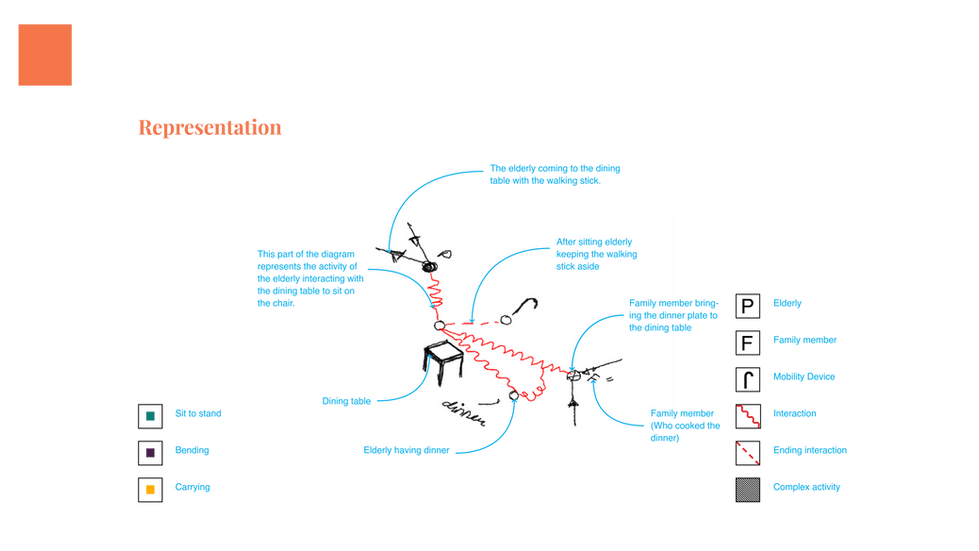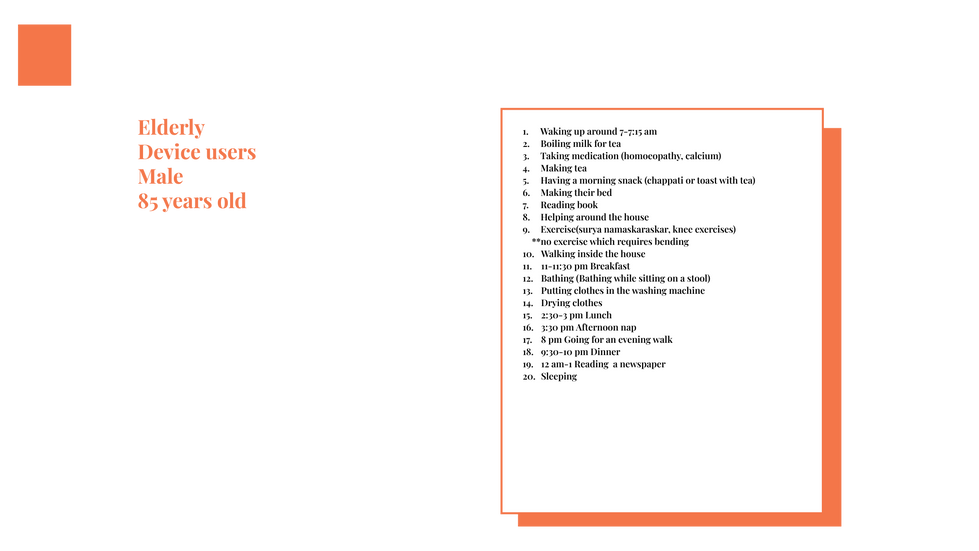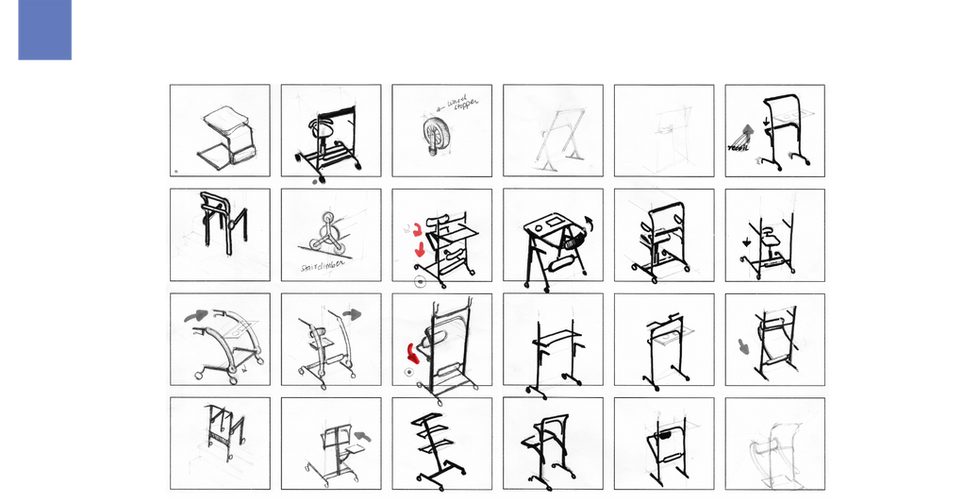Mobility Solution for the Elderly (Graduation Project)
- Tejas Pawar
- Jul 5, 2024
- 5 min read
Updated: 16 hours ago

“This was executed as part of my Graduation Project, under the guidance of Elephant Design Pvt. Ltd., a renowned consultancy in the field of design and innovation.”
Duration:
8 Months
Mentor:
Ashish Deshpande
Team member:
Tejas Pawar
Software:
Solidworks, Blender, Keyshot, Illustrator
Brief:
“In the current scenario, semi-dependent elderly between the age group of 75-85 due to illness, ageing, or degradation of motor neuron functions, their day-to-day mobility becomes a major concern, making them dependent on the mobility device. The current design of these devices (walkers, wheelchairs, etc)provides limited function, and freedom and lowers social respect, so there is a need to redesign these devices.”
Context
The graduation project focuses on developing a mobility solution tailored to the unique challenges faced by semi-dependent elderly individuals. This demographic often struggles with mobility due to ageing, illness, or motor neuron degradation, which limits their independence and affects their sense of pride.
The project involved extensive research to understand the factors affecting mobility, examining physiological, psychological, societal, and environmental influences. Through interviews and observations of daily routines, the project gained insights into the needs, struggles, and aspirations of semi-elderly individuals. A key finding was that a successful mobility device must address physical functionality while enhancing independence, self-worth, and dignity, countering the stigmas associated with mobility aids.
Final Solution
The culmination of this project resulted in a mobility device that embodies both functionality and emotional resonance.


Key Features
Sit-to-Stand Mechanism: This innovative feature assists users in transitioning from sitting to standing positions with ease.


Wheelchair to Walker transformation: Simple clamping up the seat turn the wheelchair into a walker.

Armrest Design: Armrest is designed in such a way that it matches Indian standard kitchen counter height, so elderly could perform kitchen task while leaning on the armrest. It also provides support incase of swaying.

Telescopic Arm Design: Telescopic arm to provide support while turning around.


Foldable: Foldable design to carry around the walker while travelling in public or private transport.

Research Phase
The project began with a comprehensive exploration of the unique challenges faced by elderly individuals aged 75-85. Many in this demographic experience mobility issues due to various factors, including chronic illnesses, natural ageing processes, and motor neuron function degradation. These challenges often lead to a diminished sense of independence and self-worth. To gain insights into these issues, I conducted extensive desk research that included:
Mind Mapping: This visual tool helped identify key determinants affecting mobility, such as physical health, psychological factors, environmental barriers, and societal attitudes.
Field Research: Engaging directly with elderly individuals through interviews and observations provided valuable perspectives on their daily struggles and experiences with existing mobility devices.
Primary Research Methods
In-depth Interviews: Conducting one-on-one interviews with elderly individuals allowed me to gather qualitative data about their personal experiences and challenges related to mobility. These interviews focused on their daily routines, interactions with existing mobility devices, and emotional responses to their mobility limitations.


Observational Studies: I observed elderly individuals in their natural environments to understand their interactions with mobility aids and the physical spaces they navigate. This method provided insights into real-world challenges, such as navigating stairs, uneven surfaces, and crowded areas.

Shadowing: By shadowing participants throughout their day, I gained a deeper understanding of their mobility-related struggles and the contexts in which they use mobility devices. This method highlighted specific pain points that needed to be addressed in the design process.


Benchmarking: I analyzed existing mobility devices to identify their strengths and weaknesses. This comparative analysis helped inform design decisions by highlighting features that were well-received by users and those that fell short.

"A Day in the Life" Documentation: Participants documented their daily activities, focusing on moments where mobility was a challenge. This narrative approach provided rich qualitative data that informed my understanding of their needs and desires. A specialized tool was used to represent the data in form of Feynman Diagrams, below are few snaps shots of it.
Secondary Research Methods
A thorough literature review was conducted to gather existing knowledge on mobility issues among the elderly. This included academic articles, reports from healthcare organizations, and studies on aging and mobility.
Mind Mapping: I utilized mind mapping as a tool to visually organize information related to mobility determinants, such as physical health, psychological factors, environmental barriers, and societal attitudes. This helped in identifying key themes and relationships among different factors affecting mobility.

Analysis of Age-Related Diseases: I researched common diseases and chronic conditions affecting the elderly, such as arthritis and cognitive decline, which contribute to mobility limitations. Understanding these conditions was crucial for designing a device that accommodates specific physical needs.

Risk Factor Assessment: I examined various risk factors associated with mobility limitations, including sedentary lifestyles and environmental hazards (e.g., poor lighting or lack of ramps). This assessment informed design considerations for safety features.
Through this multifaceted research approach, I gathered a wealth of information that not only highlighted the physical challenges faced by elderly individuals but also illuminated their emotional needs for dignity and independence. This comprehensive understanding ultimately guided the design process towards creating a mobility solution that resonates with users both functionally and emotionally.
Problem Identification
Through my research, I uncovered several problem areas which need to be tackled, for a mobility device to truly work in a holistic manner.

Design Development
The design development process was iterative and involved several stages.
Brainstorming session with different teams: Brainstorming sessions led to multiple concepts that prioritized simplicity and user-friendliness. The goal was to create a device that felt like an extension of the user rather than just a tool.
Problem Solution Pairing: The process of “Problem Solution Pairing” was undertaken to unify the various ideation concepts derived from brainstorming sessions and align them with the specific problems they addressed. This allowed for a comprehensive understanding of the overall picture while identifying the key sections that needed to be incorporated into the device.

Sketch Ideation: Initial sketches evolved into detailed designs incorporating ergonomic research and material considerations. The focus was on creating a device that facilitates easy movement while ensuring safety.
Thumbnail Ideation: Instead of pursuing complex designs, the focus during thumbnail ideation shifted towards addressing one problem at a time or tackling the problem with the aid of a simple mechanism. The objective was to consider the users’ needs and avoid creating something that appeared overly intricate or like a contraption.
Form Ideation:

1:1 Sketch:

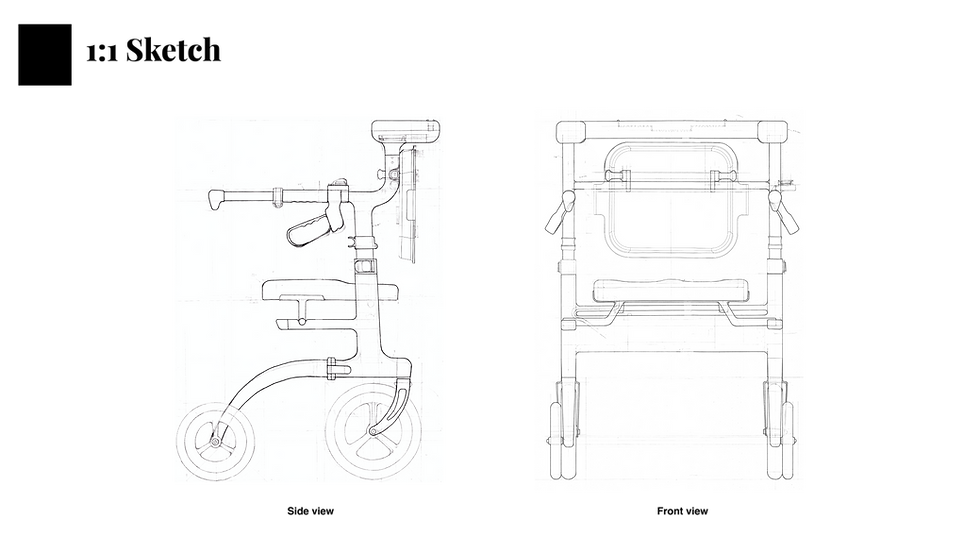
Technical Details
Components:
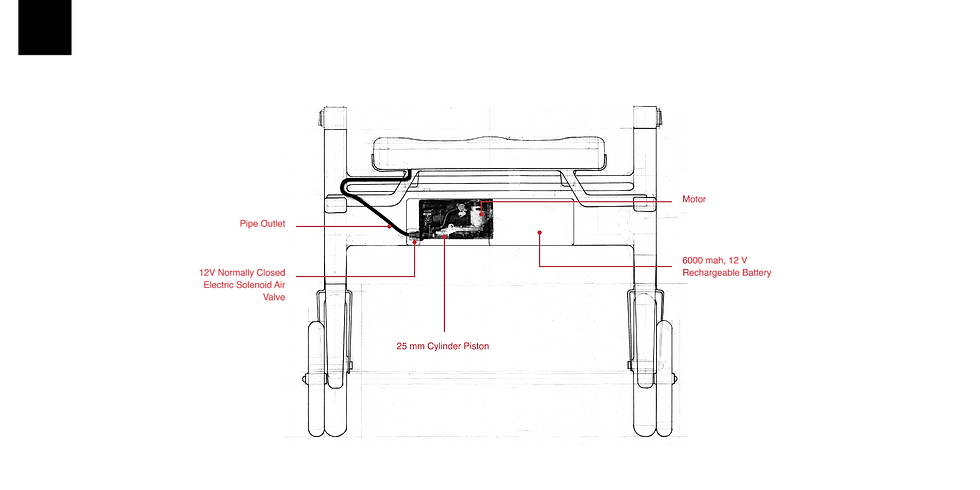
Cross Section:

Parts:
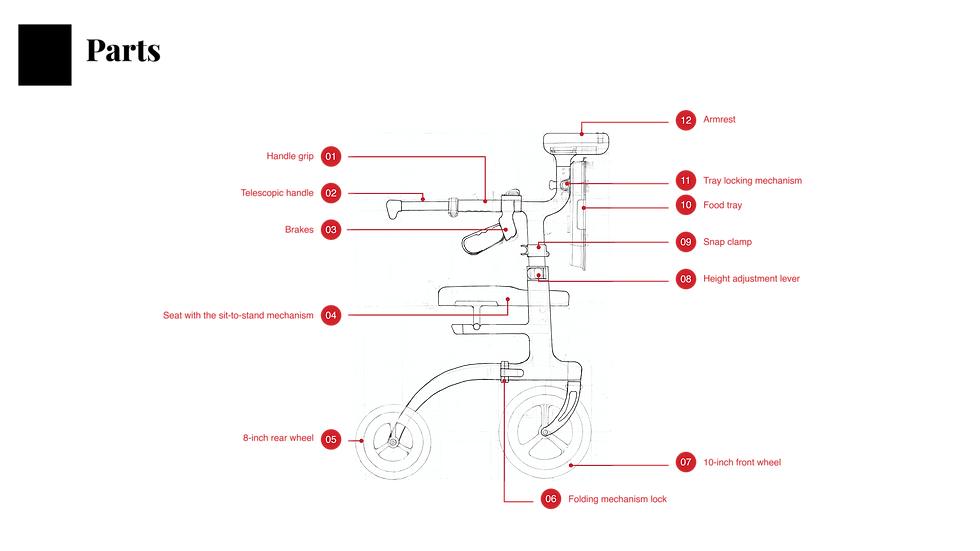

Human Reference


Conclusion and Reflection
This graduation project was not just an academic exercise; it was a transformative journey that deepened my understanding of design's role in improving lives. By focusing on user-centric principles and embracing inclusivity, I aimed to challenge societal perceptions surrounding mobility devices. As I reflect on this experience, I am grateful for the guidance from my mentors at Elephant Design and my supportive peers at NID. This project has reinforced my belief in the power of design as a catalyst for positive change in society, particularly for vulnerable populations like the elderly. In sharing this journey, I hope to inspire others to consider how thoughtful design can enhance dignity, independence, and quality of life for all individuals facing mobility challenges.

